Taking an environmentally sensitive approach to pest management
SUBSCRIBE
Plan(t) Now for Succession of Spring Color
Published: October 12, 2021
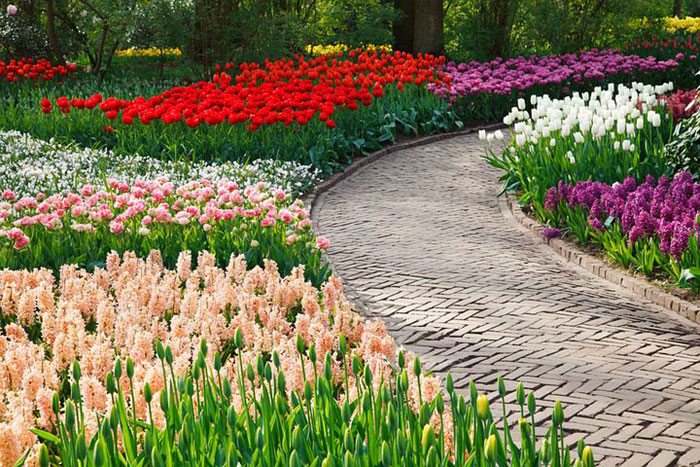
There still is ample time this fall to plan and plant for a non-stop show of flowers that will add a splash of color to the landscape in late winter. Different species of bulbs planted now often begin to flower in early February and provide different types of flowers and colors until May, when the vibrant spectacle of spring takes center stage.
For gardeners trying for extra early flowers, location tends to have a significant influence on time of bloom. A south-facing location often brings out flowers a week or two earlier than other exposures, especially when it is adjacent to the home. Additionally, in late winter, the weather will have a great impact on of the appearance of the first flowers. A mild period in late January may coax early blooming species out of dormancy, whereas prolonged cold weather might delay those same species to flower until mid or late February.
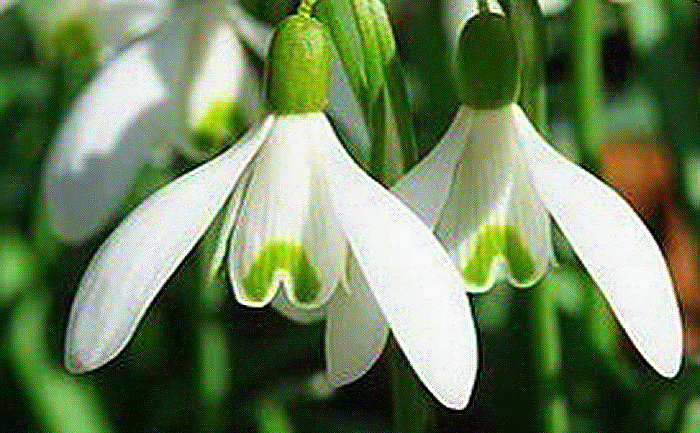
Snowdrop
One of the most dependable early spring flowers is the snowdrop (Galanthus nivalis). A member of the Amaryllidaceae plant family, the drooping, bell-shaped flowers of snowdrop are only a few inches tall with three outer white petals (sepals) surrounding three inner white petals that are marked with green. There also is a double form of snowdrop available. Although snowdrop bulbs are slow to multiply, clumps gradually form which can last many years when located in well-drained soil.
Crocus (Crocus spp.) is another popular early spring flower that often is referred to "the harbinger of spring." A member of the Iridaceae plant family, there 80 crocus species that normally are classified into two major groups: 1) the earlier bunch-flowering crocus, sometimes referred to as snow crocus, and 2) the larger, giant-flowering crocus. Most of the crocuses planted each fall actually are hybrids of these species and are known commercially as the Dutch hybrids which fall into the second group. Although a bit later in flowering, the hybrids have larger, showier flowers than do the species. In all cases the cup-shaped, solitary, salver-form flowers taper off into a narrow tube. They are available in a variety of colors including yellow, white, mauve and lilac. Hybrids with striped petals also can be found.
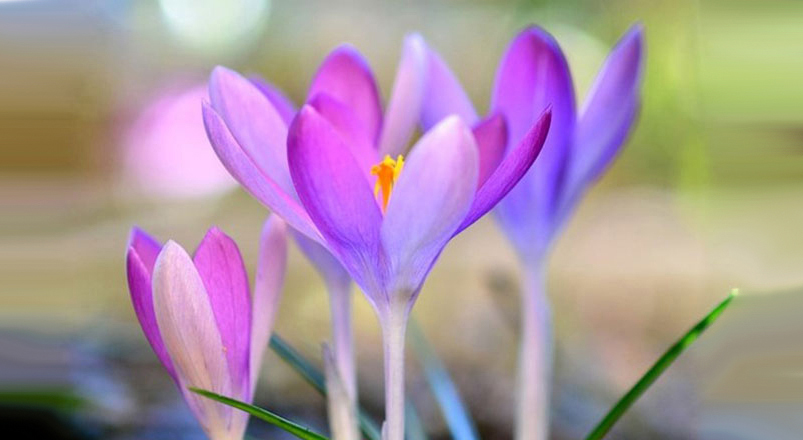
Snow crocus (Crocus chrysanthus)
Crocuses normally grow four to five inches tall and flower in late winter or early spring. Early bunch-flowering crocus varieties often will begin to bloom along with snowdrops. Flowers are small, but colorful, and produced in multiples to make them readily visible when all else in the landscape is bare. Popular varieties of the early flowering crocuses include 'Advance,' 'Firefly,' 'Cream Beauty,' 'Blue Pearl', 'Snow Bunting', 'Zenith,' 'Gypsy Girl' and 'Romance.'
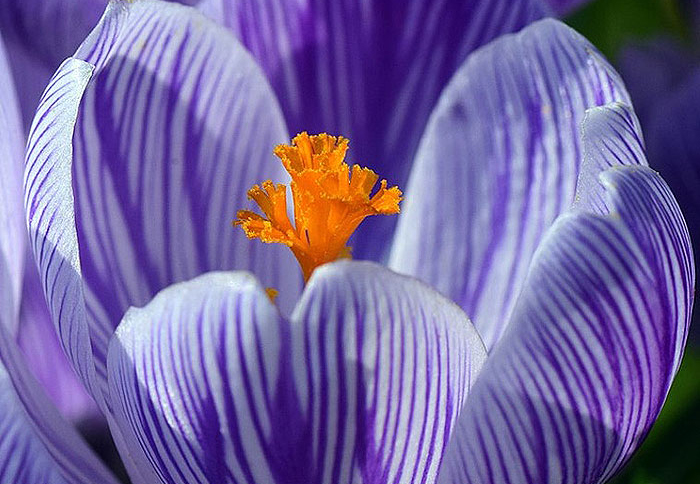
Dutch hybrid crocus 'Pickwick'
More common and more spectacular are the Dutch hybrids and large-flowered crocuses. However, they tend to bloom several weeks later than the bunch-forming type. Flowers may be up to about six inches tall and often bloom for several weeks, if the weather is relatively cool. Popular varieties include 'Jeanne d'Arc,' 'Remembrance,' 'Yellow Mammoth,' 'Pickwick' 'Grand Maitre,' and 'Ruby Giant.' Whatever the type, crocus bulbs (corms) need to be planted in well-drained soil in large groupings more for a significant show in the landscape.
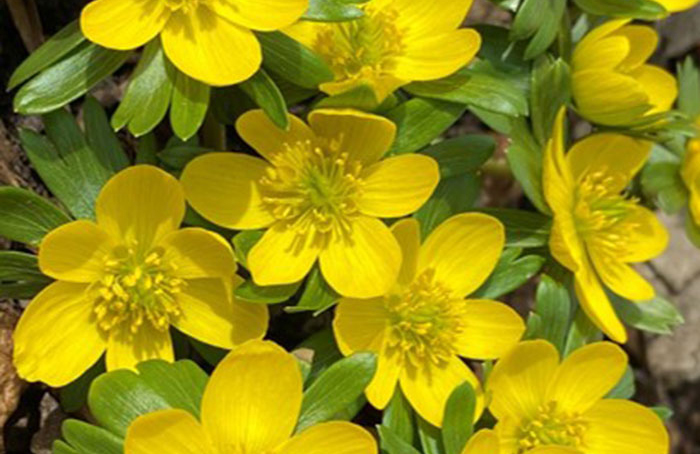
Winter aconite (credit: Missouri Botanical Garden)
Yellow appears to be a favorite color for spring flowers. While yellow varieties of crocus exist, winter aconite (Eranthis hyemalis) and a dwarf iris known as the Danford iris (Iris danfordiae) are two additional options that gardeners might want to try. Both grow only about three inches in height and flower in late February or early March. Winter aconite has yellow buttercup-like flowers. Bulbs (tubers) need well-drained soil and bright light. They are good companions with varieties of Iris reticulata, a blue iristhat normally starts to flower with the previous two, but often continues to flower later.
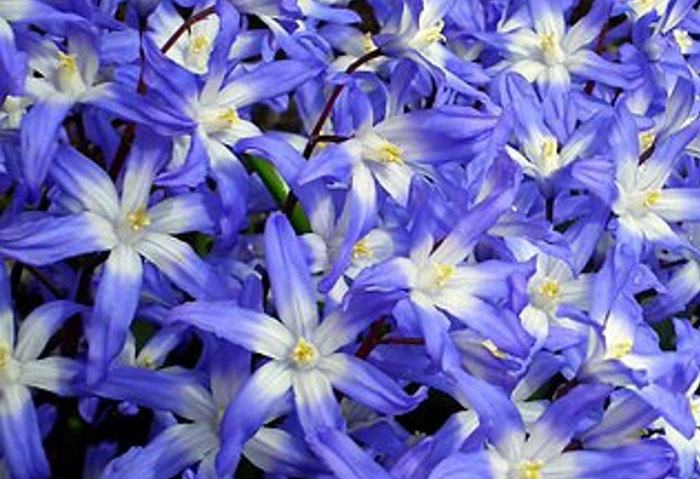
Glory-of-the-snow
As these very early bulbs near completion of flowering, a series of other small bulbs provides additional shows of color. These include Siberian squill (Scilla siberica), grape hyacinth (Muscari armeniacum), glory-of-the-snow (Scilla forbesii) and the early flowering "true" hyacinths (Hyacinthus orientalis). Although hyacinths may survive in a well-drain garden site for years, as the bulbs multiply and produce several stalks, flower spikes usually are smaller. For this reason, hyacinths often are treated as annuals or short-lived perennials.
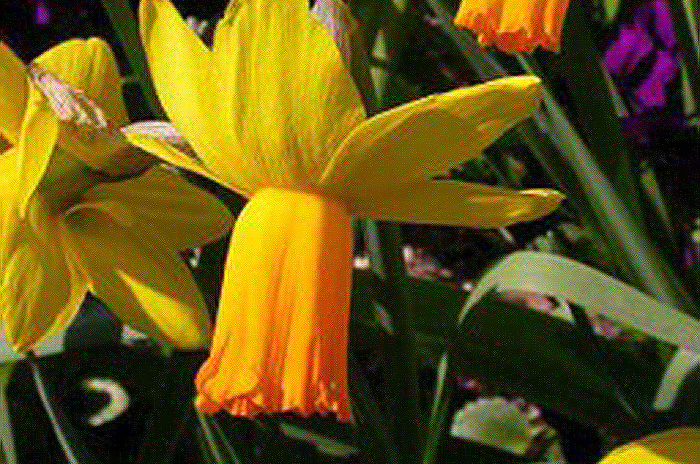
Narcissus 'Jetfire' (credit: Missouri Botanical Garden)
Along with these early flowering species will be the beginning blooms of narcissus (Narcissus spp.) and tulip (Tulipa spp.). Some of the earliest narcissus are 'February Gold' (a daffodil type), 'Tete-a-tete' (a minature) and the orange-cupped variety 'Jetfire.' Once the narcissus season has begun, there is rapid development of a wide range of colors and forms that provide spectacular color during March and April. Narcissus tend to naturalize well in Missouri and, given proper growing conditions, remain in the garden for many years.
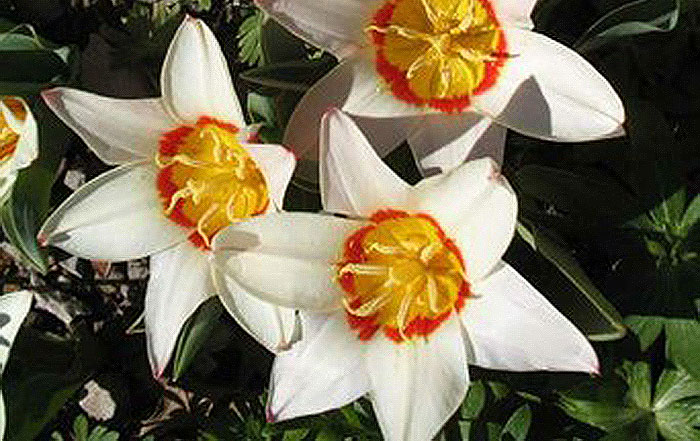
Tulip 'Ancilla' (credit: Missouri Botanical Garden)
The blooming period for most tulips in Missouri ranges from late March to early May, depending upon variety. One of the earliest is the Kaufmanniana group (a.k.a. water lily tulips) represented by varieties such as 'Ancilla,' 'Heart's Delight' and 'Showwinner.' Varieties of the Fosteriana group (e.g., 'Flame's Mystery,' 'Yellow Emperor,' and 'Sweet Sixteen') follow in the flowering succession. Other early-flowering varieties include 'Queen of Sheba,' a lily-flowered tulip, and Greigii varieties such as 'Calypso,' 'Concerto,' and 'Gold West.'
As the weather warms, the succession of tulip flowering speeds rapidly with single-early Darwin hybrids, Triumph types and the botanicals (or species tulips) take their turns. The nearly complete range of tulip colors makes it possible to satisfy nearly any color preference in the garden. Although most tulips are spectacular their first year, they do not naturalize as well in Missouri as does narcissus. Therefore, they need to be treated as annuals or replaced on a fairly regular basis.
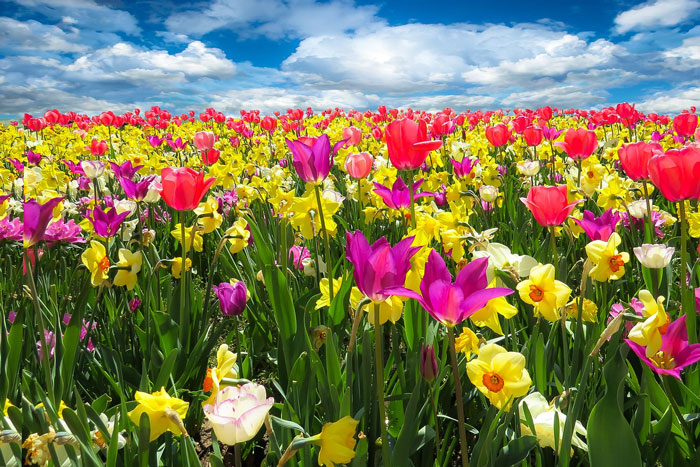
Tulips and narcissus in full bloom
As the progression of spring-flowering bulbs is well under way, it is joined by herbaceous perennials, wild flowers, forsythia and a wide range of other plants to help remind us that spring has returned, once again. For now, we can only dream of it while we are planting bulbs.
REVISED: October 12, 2021








